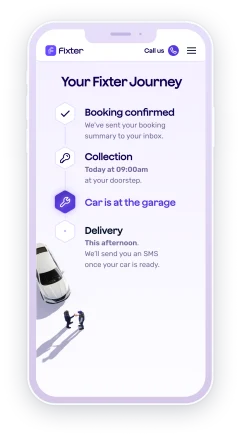How to Fix a Sagging Car Headliner: A Step-by-Step Guide for the Everyday Motorist
A sagging car headliner can be an annoying eyesore and a potential distraction whilst driving, but fear not, as it's a problem that can be easily tackled with a bit of know-how and some basic tools. This guide is designed for the everyday motorist, offering a straightforward, step-by-step approach to restoring your vehicle's interior to its former glory. From identifying the root cause of the droop to selecting the right materials for the job, we will navigate each stage with practical advice and clear instructions. With a little patience and effort, you can transform your car's sagging headliner into a neat and tidy ceiling once more. So, let's roll up our sleeves and get started on this simple DIY: how do you fix a sagging car headliner.

Understanding the Problem
Before you dive into repairing your sagging headliner, it's critical to understand why the problem occurs in the first place. This section explores the causes, signs, and safety concerns associated with a drooping or sagging headliner quickly, setting the stage for effective repair.
What Causes a Headliner to Sag
Over time, various factors can lead to a sagging headliner. Common causes include prolonged exposure to heat, which can weaken the adhesive holding the headliner fabric in place. Moisture can also seep into the interior, degrading the adhesive.
Mechanical stress from frequent use, such as opening and closing doors, can further contribute to the issue. Additionally, age naturally deteriorates the materials, making them susceptible to sagging.
Understanding these causes can help you prevent future headliner sagging. Regular inspection and maintenance are key to prolonging the life of your car's headliner.
Identifying Signs of Wear
Recognising the signs of wear early on can spare you from more extensive repairs down the line. Look for telltale indicators such as fabric that hangs loosely from the ceiling, wrinkles, or bubbles in the fabric.
Be vigilant for any noise or movement that suggests the car headliner fabric is not securely attached.
Regular checks can help you catch these issues early, making repairs simpler and more cost-effective.
Safety Concerns with a Sagging Headliner
A sagging roof or headliner is more than just an aesthetic issue; it can also pose safety risks. A drooping ceiling can obstruct your view, especially if it sags significantly. This can be hazardous, particularly while driving at speed.
In some cases, a detached headliner might even fall completely, causing visual obstruction or distraction.
Addressing these concerns promptly is crucial, not only for the neatness of your car's interior but also for the safety of all passengers.
Preparing for the Repair
Preparation is key to a successful repair. This section covers the essential tools and materials you'll need, how to choose the right adhesive, and tips on creating an effective workspace, helping you get ready for the task ahead.
Gathering Necessary Tools and Materials
Before you start, gathering the necessary tools and materials is essential. You'll need items such as a screwdriver set, adhesive, a utility knife, and a clean cloth.
Some materials like fabric and foam backing board may be required if replacement is necessary.
Having everything on hand will make the repair process smoother and reduce interruptions.
Choosing the Right Adhesive
Selecting the appropriate adhesive is crucial for a long-lasting repair. Consider the material of your car headliner repair, and vehicle. Spray adhesives are popular for their ease of use and effective bonding properties.
Reading reviews and product specifications can guide your choice of glue. Ensure the adhesive is heat-resistant and suitable for automotive use.
A poor choice could mean the repair won’t hold, leading to repeated sagging.
Workspace Preparation Tips
Creating an adequate workspace is essential for a smooth repair process. Ensure the area is well-lit and spacious enough to manoeuvre your tools and materials.
Clear the space of any unnecessary items to avoid clutter and potential accidents.
Position your vehicle in a way that allows easy access to the car headliner replacement part, such as using a garage or a shaded outdoor area.
Step-by-Step Repair Guide
Now that you're prepared, it's time to tackle the headliner repair itself. This section provides a comprehensive, step-by-step guide on removing, cleaning, reapplying adhesive, and securely reinstalling your car's headliner.
Removing and Cleaning the Headliner
Remove all the trims and fixtures that hold the headliner. This often includes visors, grab handles, and dome lights.
Gently pull down the headliner board, being careful not to damage it.
Clean the board using a soft cloth to remove any residual adhesive or debris.
Ensure the surface is completely dry before proceeding to the next step.
Reapplying Adhesive Properly
Apply a thin, even layer of adhesive to both the headliner board and the fabric.
Allow the adhesive to become tacky, which usually takes a few minutes.
Carefully align the fabric on the board, smoothing out any bubbles or wrinkles as you go.
Press firmly to ensure the fabric adheres securely to the board.
Reinstalling the Headliner Securely
Place the headliner board back into the vehicle, ensuring a snug fit.
Reattach any trims and fixtures you removed earlier.
Check the alignment to ensure it's even and secure.
Test the adhesion to confirm the headliner is firmly in place, making adjustments if necessary.
Alternative Solutions
While DIY repairs can be effective, there are alternative solutions to consider. This section explores quick fixes, compares professional repair with DIY, and offers tips for preventing future issues with your car's roof and headliner.
Quick Fixes for Temporary Relief
If you're short on time or resources, quick fixes can offer temporary relief. Double-sided tape or upholstery pins can temporarily hold up sagging sections.
Quick fixes are not a long-term solution.
They may require frequent reapplication.
Useful in emergencies when a full repair isn’t feasible.
Professional Repair vs. DIY
Choosing between professional repair and DIY depends on several factors. Professional services offer expertise and warranty but can be costly.
Aspect | Professional Repair | DIY |
Cost | High | Lower |
Skill Required | Low | Moderate |
Time | Short | Varies |
Consider your budget and confidence in handling the repair yourself.
Preventative Maintenance Tips
To minimise future issues, regular maintenance is key. Keep your car's interior clean and dry, and avoid prolonged exposure to extreme temperatures.
Inspect regularly for signs of wear.
Address minor issues before they become major problems.
Use sunshades to protect from UV damage.
Troubleshooting Common Issues
Even with the best intentions, issues can arise during or after the repair. This section provides guidance on dealing with stubborn areas, addressing adhesive failures, and ensuring your repair lasts.
Dealing with Stubborn Areas
Some areas may resist adhesion, requiring extra attention. Focus on ensuring these spots are clean and free of debris.
Use additional adhesive if necessary.
Reapply pressure until you achieve a solid bond.
Avoid over-stretching the fabric, which can lead to further issues.
Addressing Adhesive Failures
Adhesive failures can be frustrating. If the fabric doesn't stick, check if the adhesive is suitable for the materials used.
Ensure surfaces were clean and dry before application.
Consider using a different type of adhesive.
Follow the application instructions carefully.
Ensuring Long-Lasting Results
To ensure a durable repair, focus on quality and attention to detail during each step. Take your time to ensure each action is performed correctly.
Use high-quality materials.
Regularly inspect the headliner post-repair.
Address any issues promptly to prevent them from worsening.








